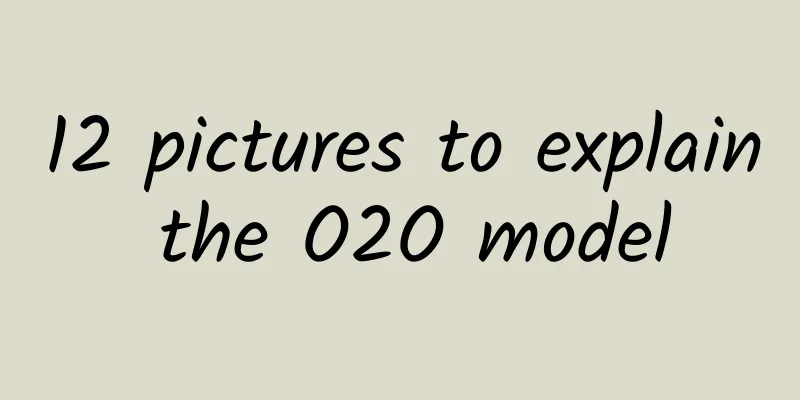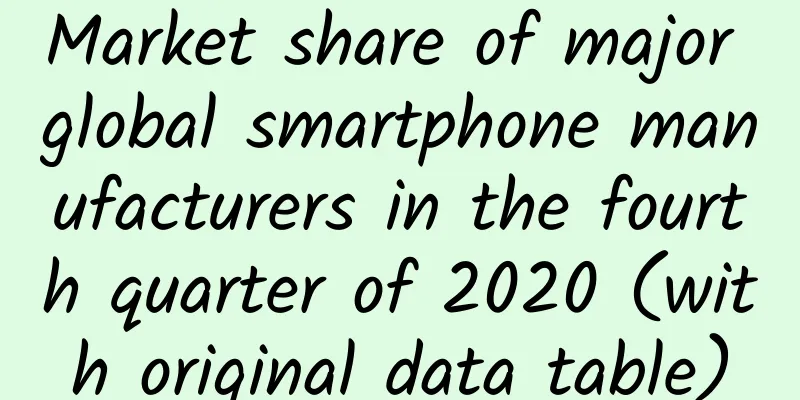12 pictures to explain the O2O model

|
The concept of O2O was first proposed by TrialPay founder and CEO Alex Rampell in August 2011. He defined O2O as bringing online consumers to real stores, and the Internet became the front desk of offline transactions, which promoted the development of online-offline business. With the introduction of this concept, a large number of products and services that advertise the O2O model came into being. The editor only searched for a niche market such as commuting carpooling and found more than 50 car software. While feeling the popularity of O2O and embracing the new model, he also saw the impetuousness and bubbles in the market. The famous French psychologist Le Bon has a book called "The Crowd" that specializes in the study of social conformity. It says that individuals in a group often lose their rationality, become incapable of reasoning, and their thoughts and emotions are easily influenced by others' suggestions and contagion and become conformists. This theory may also explain the phenomenon of business models following the trend. So today, the editor wants to trace the origin with everyone and interpret the most essential things in the O2O bilateral market. Calm down, calm down again. What is O2O At the beginning, the editor mentioned that Alex Rampell's definition of O2O is to bring online consumers to real stores. The Internet becomes the front desk of offline transactions, which promotes the development of online-offline business. Although the concept of O2O we see now has deviated from Alex RamPell's original definition of "Online to Offline", and has added three new directions: "Offline to Online", "Offline to Online to Offline", and "Online to Offline to Online", O2O itself is oriented towards the field of life consumption, and is actually the process of mobile Internetization of life consumption, which remains unchanged. Furthermore, O2O has a two-sided market, which is simply the user side and the supply side. How the platform intervenes in a lighter and more efficient way will be a key issue in the O2O model. Development stages of O2O The earliest O2O we saw was an information platform similar to Dianping.com, which was dedicated to allowing netizens to easily obtain information about life services, so the editor called it "looking for him in the crowd". Later, the information platform needed to be monetized, and it could extend its tentacles to offline through information diversion, so we saw the group buying model that was popular in 2011-2012. Online customers were diverted to offline physical stores through discounts and other means. In the past three years, the strong development was represented by apps such as "Are you hungry?" and "Home Food", which brought meals made in physical restaurants to customers' homes. From in-store service to door-to-door service, the chain of value delivery is reversed, so as to make a "shifting the world" money. Recently, the more popular O2O model is the "creating something out of nothing" model. The reason why it is called creating something out of nothing is that the current models such as 58 Daojia, Beaver Home, Kung Fu Bear, etc. do not necessarily have to cooperate with offline physical stores. From delivering value to creating value, the stores are demolished, the craftsmen are liberated, the service standards are standardized, and the service industry is transformed in a more thorough way to make it truly Internet-based. O2O Market Status O2O is not just an industry, or even a business model, but a way of thinking, a way of mobile life services. It can involve all aspects of life, such as eating, drinking, playing, living, traveling, birth, aging, sickness and death, marriage, and educating beauties. The editor uses the customer order amount as the vertical axis, the transaction frequency as the horizontal axis, and the size of the graph as the estimated market size. It can be seen that O2O is a huge market, and each segment is behind a complete industrial chain (taking the takeaway segment as an example). O2O User Terminal 1. How to stimulate demand: Crazy subsidies In terms of stimulating user demand, the most common way we see is "subsidy". We can divide the existing subsidy models into three types. "Acceleration subsidy", "traffic subsidy" and "ecological subsidy". Acceleration subsidy refers to acquiring customers through "subsidy", accelerating the change of customers' existing habits, so as to achieve economic scale faster, such as Didi Taxi and Baidu Takeaway, which are high-frequency life service fields with rigid demand. "Traffic subsidy" refers to reducing decision-making costs and acquiring users. Using zero or even negative gross profit to sell "traffic category" products, and then relying on cross-selling to sell high-profit "gross profit category" products, similar to Taobao's way of creating "explosive products". The cases we have seen in the O2O field are trying to cut into the market segments of confinement nannies and childcare nannies through cleaning; cutting into the automotive after-sales maintenance and repair market through car washing, etc. "Ecological subsidy" refers to subsidizing the problem of insufficient supply on one end of the O2O "two-sided market", protecting the user and merchant experience, and promoting the double-end cycle pull. When Didi Taxi was just starting out, in order to ensure that the taxi drivers who connected to it had orders, they even hired people to take taxis. When UBER first entered China, in order to ensure that users could have cars to take orders in time, it specially hired full-time drivers to ensure the supply of vehicles. We call this "ecological subsidies" 2. How to meet needs: Establish service standards Standardization of non-standard services The service standards mentioned here are no longer the offline service processes we see. When we walk into a hair salon in a physical store, there may be a teacher named TOM to greet us. We have simplified the process to Tom say Hi - Tom washes hair - Tom does hair - Tom sells membership cards - Tom says Bye, which is the standardization of the process. However, the standard we are talking about here refers to the standardization of services. Take 58 Home as an example. The aunt wears the uniform 58 Home work clothes and carries the tools provided by 58 Home to the door. There are standards for what to say after knocking on the door, which part to sweep first, which part to sweep later, and which tool to use for which part. The aunt will carry 9 rags, and there are regulations for where each rag should be wiped. After serving a customer every time, the aunt must clean the rag and store it in a partition. This is what we are talking about, establishing service standards. Emphasis on evaluation system Previously, a large number of blue-collar workers did not care much about service evaluation. They belonged to a housekeeping company or a nail salon and were assigned jobs in order. Then the C2C self-operated model requires each craftsman to have his own reputation and brand, and sometimes even the problem of "good reviews" arises. However, when new problems arise, there will be new ways to solve them. At least in terms of evaluation and word of mouth, the transparent evaluation system of the Internet has allowed us to see another level of service improvement. 3. How to make user needs exceed expectations? User experience is a complete process On the user side, I would like to mention that after stimulating and satisfying user needs, user experience is endless. Take takeout as an example. In a takeout process, I have received more than 5 SMS notifications from order placement, payment, delivery, and delivery completion. Is it possible to consider shortening the process and reducing the interruption to the user to complete the service? Therefore, all points of contact with users are user experience. O2O supply side 1. How to stimulate supply demand: profit and growth As the saying goes, it is more important to divide the land than to be high-end. Releasing a large number of craftsmen from traditional stores not only tells them that they will get freedom and respect in their work, but also guarantees income. In terms of stimulating supply, the current O2O generally adopts a more incentive-based salary system, so that hard-working people can get high returns. At the same time, it improves the growth training system for blue-collar workers, so that they can make money and have hope. 2. How to optimize supply and demand: freedom and rules When it comes to door-to-door service, people often pay attention to the problem of "flying orders", for example, users can establish private contact with the cleaning lady and skip the platform to complete the service process. This involves the system. On the one hand, we need to make craftsmen trust the value of the platform, let them feel the continuous flow of customers and the sense of belonging to the organization, and on the other hand, establish a "high-voltage line". Once the platform's rules and regulations such as "flying orders" and "price hikes" are touched, no more orders will be sent. 3. How to optimize the project based on operational data and first make it work in a small area I have interviewed several traditional offline housekeeping and nail salons. Apart from simple financial systems, they hardly pay attention to data mining and operation. This is also a huge advantage of the current Internetization of the service industry. Taking takeout as an example, the platform can establish the relationship between data and business models, find key factors, and then further find a reasonable data optimization path, thereby leveraging the growth of core indicators such as the cost of a single order or the profit of a single user. The future of O2O From the beginning, we began to analyze that O2O is a two-sided market, the user side and the supply side. If we must find a focus, the editor believes that the focus of O2O at this stage can be placed on the supply side. Most O2O businesses are aimed at mature offline needs, so demand is often not the bottleneck, but supply is. We don’t want to see the group buying of the year, where crazy user subsidies led to the closure of a large number of companies. What we hope to see is that in the future, O2O can subvert non-standard services and awareness, and help offline merchants and consumers improve efficiency. By optimizing supply, improving efficiency and perfecting processes, after user subsidies gradually fade away, it can still become a killer for expanding the market with low cost and high efficiency. The popularity of venture capital, the low threshold for entrepreneurship, and the various drawbacks of traditional service experience have led to a surge in entrepreneurial projects. After getting over the impetuousness, we will find that data can only identify operational problems but not logical problems, and money can only solve time problems but not logical problems. Only those O2O products and services that are clearly thought out will be the real O2O in the future. via: Baidu Advertising View |
>>: eMarketer: B2B embraces a mobile-first future
Recommend
Silver Age Health | As the temperature rises, do a good job in preventing and treating bedsores
There are many elderly people who cannot move fre...
What should I eat to remove blood stasis during my period?
When women have their menstrual period, they ofte...
What are the main causes of eclampsia?
If a pregnant woman suffers from eclampsia, she w...
Causes of bloody stool after cesarean section
If you have blood in your stool after a cesarean ...
Does drinking less milk really help?
Many pregnant women have very little milk after g...
Is honeysuckle cold in nature? How to soak honeysuckle in water and drink it
If the honeysuckle tea runs well, we can smell th...
Is cervical fibroid surgery minimally invasive?
Cervical uterine fibroids are a unique type of ut...
How to formulate dietary policies? How to eat healthier? All these are inseparable from nutrition research.
Produced by: Science Popularization China Author:...
Can fetal malformation be detected?
Recently, many pregnant mothers have given birth ...
TechInsights: Smartphone market share in China, the US and Latin America in Q3 2023
TechInsights Wireless Smartphone Strategy (WSS) S...
3 major treatment methods for postpartum sweating
Profuse sweating is a physiological characteristi...
How to recover from a big belly after childbirth
After giving birth, the pregnant woman's abdo...
The last fall in life: Grandma and the dilemma of one million elderly people in their later years
In January 2021, my grandmother’s painful later l...
Don’t take minor dizziness lightly, it may be a sign of certain diseases!
Dizziness is a very common symptom in life, espec...
Singapore bans milk tea advertising. Can drinking milk tea cause diabetes?
Before answering this question, let's take a ...









